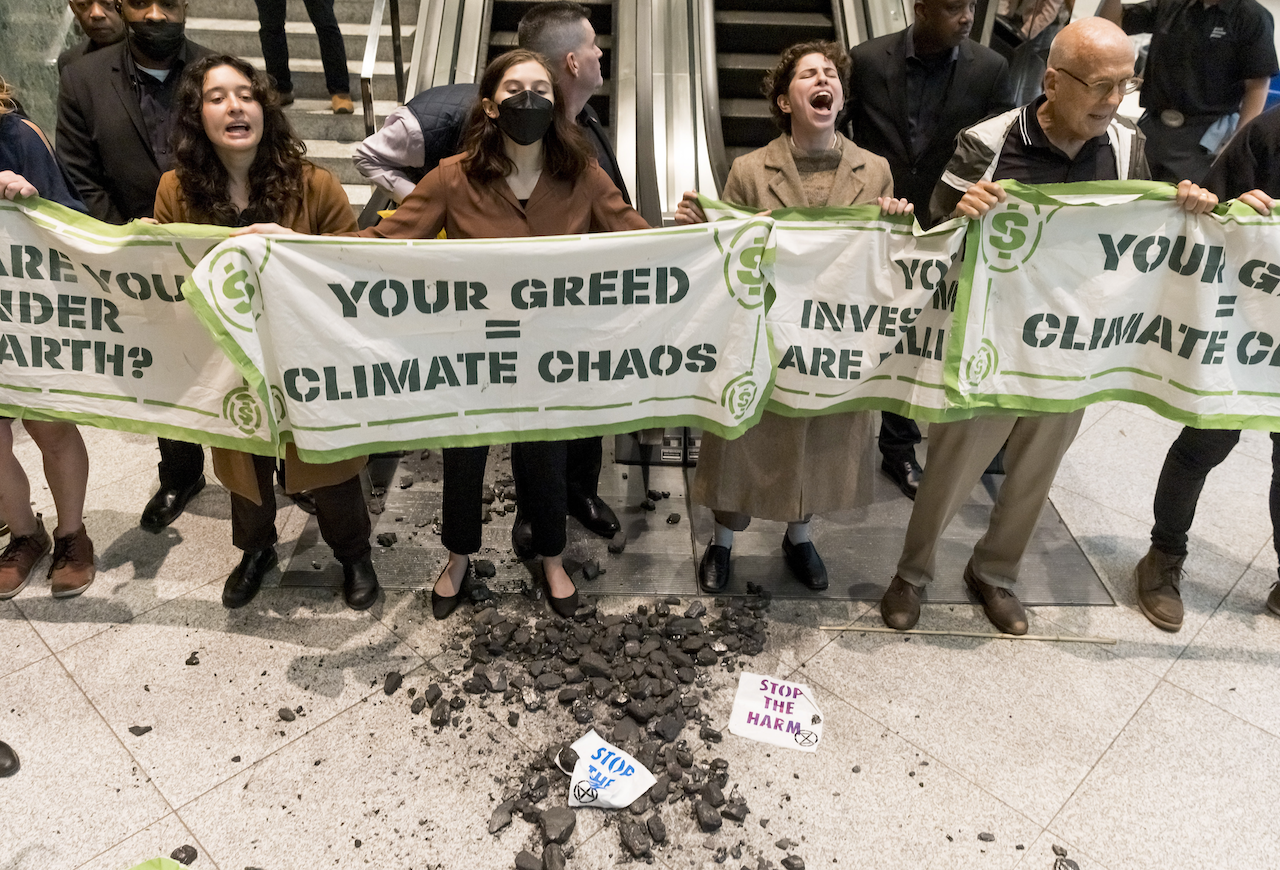A global transformation to a low-emissions economy is expected to require investments of at least $4-6 trillion a year, according to the UN latest report on progress made by signatories of the Paris Agreement

In brief
- The UN has published its annual report on the climate goals of countries that signed the Paris climate agreement.
- Their targets are “woefully inadequate” to stop severe warming, the UN said.
- The financial sector plays a key role in growing a sustainable economy.
- There is plenty of capital worldwide, but the vast majority goes to fossil fuels.
Banks, insurers and pension funds must radically change the global financial system in which they operate to stop serious global warming. There is more than enough money circulating in the financial sector to meet climate goals, but the vast majority of investments go to the fossil economy. The sector is hampering sustainability, concludes a United Nations report published yesterday.
The findings of the UNEP Emissions Gap Report 2022 were released more than a week before a major climate summit starts in Egypt. The study is an important guide for negotiations between countries on new climate agreements. Financing is a key theme.
“Financial players like banks and pension funds do understand that sustainability is important, but they still invest too little in it. Changing the financial system is crucial to tackle the climate crisis,” says Pieter Pauw, professor of climate finance and one of the lead authors of the annual UN climate report.
$4-6 trillion
By the financial sector, the UN means all the capital in banks, insurers, pension funds, as well as in stock markets and private investors. In addition, the role of financial regulators and governments has been assessed.
At least $4-6 trillion of investment is needed per year globally to meet the 2015 Paris climate agreement. That is equivalent to 1.5% to 2% of all the money circulating in the financial sector and stock markets. So, according to the UN, there is more than enough money in the financial sector, but the investments are not getting to the right place. Lending to climate projects has been minimal for a decade. Relative to total global lending, climate finance rose from 0.23% in 2012 to 0.32% in 2021, the UN calculates.
Short-term interests
Pauw says the sector must dare to make other choices. Too often, short-term interests prevail. Most investors look one to five years ahead, but investing in sustainable measures requires looking decades ahead. New sustainable technology like hydrogen is still low yield and has many risks compared to an investment in fossil fuels, but in the long run it is the right investment, Pauw argues.
A radically different financial system is needed, the UN says. This requires a different attitude from banks and investors, but also stricter rules. For instance, central banks could set sustainability requirements for buying up corporate bonds. Countries should also draw up rules for what constitutes a sustainable investment and what does not, a so-called green taxonomy.
Another measure governments could introduce that would directly affect the financial sector is a carbon tax, the UN says. Currently, 30% of all greenhouse gases in the world are taxed. Like in the European Union, where polluting companies have to buy emission rights to emit greenhouse gases.
The state of California in the US also applies a price on CO₂, and in China there is an emissions trading system for large energy companies. Countries charge an average of $6 per tonne of CO₂, but that is far too little, the UN says. The International Monetary Fund says an emissions tax with an average global price of $75 per tonne of CO₂ is needed by 2030.
Global warming
Besides the financial recommendations, the report lists individual countries’ climate ambitions – they look bad. At the Glasgow climate summit last year, governments agreed to come up with improved climate targets by this year. So far, of the big emitters, only Australia, Brazil and Indonesia have done so, but not China. The UN calls the new targets “woefully inadequate” and speaks of a “lost year”.
The report finds that, despite a decision by all countries at the 2021 climate summit in Glasgow, UK (COP26) to strengthen Nationally Determined Contributions (NDCs) and some updates from nations, progress has been woefully inadequate. NDCs submitted this year take only 0.5 gigatonnes of CO2 equivalent, less than one per cent, off projected global emissions in 2030.
Countries’ current climate plans would lead to a warming of 2.4°C to 2.6°C this century, the report says. The Paris Agreement agreed to limit global warming to well below 2°C, preferably 1.5°C.
In the most optimistic scenario, if the UN includes all climate targets for 2050, global warming could reach 1.8°C. “So there is hope, although this scenario is not credible at the moment,” the UN says.
This article originally appeared in Dutch business newspaper FD, on 27 October 2022






